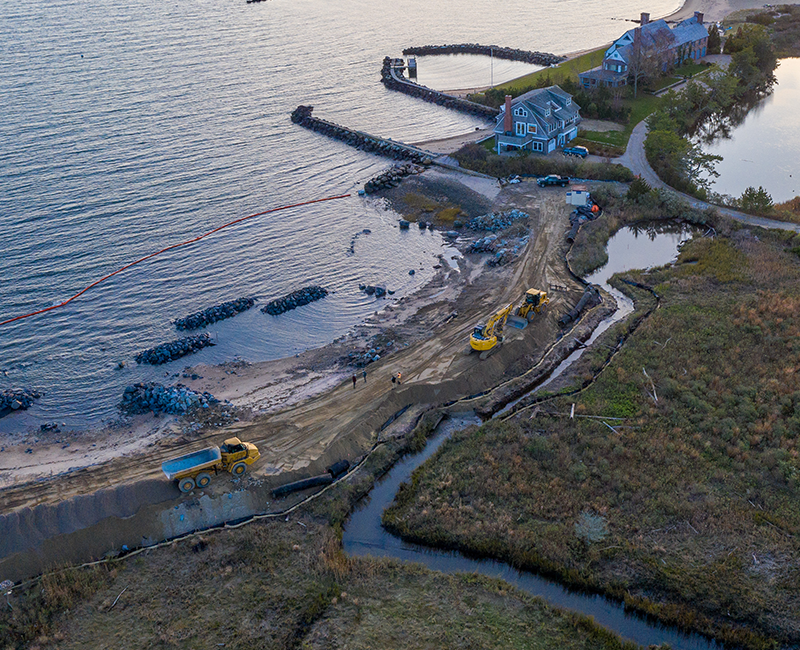


Completion:
February, 2023
Value:
$827,945

Project elements
• 480 lf of Shoreline
• 26,000 dune grass plants
• 14,000 salt marsh grass plants
• 100 coastal shrubs
• 3-acres habitat restored
ADDITIONAL HIGHLIGHTS
The Hepburn Preserve Project is only the third living shoreline project to be constructed in Connecticut and the first supported by Connecticut Institute for Resilience & Climate Adaptation.
Extensive risk-based coastal engineering, wave modeling, and ecological assessment were part of GZA’s design process.
In-surf rock sills mitigate wave energy and allow for sand to collect and support the native marsh grass and dune plantings.
Project Synopsis
The former estate of Katharine Hepburn is now the backdrop for a new living shoreline that is stabilizing a severely eroding beach and dune system on the coastal spit sheltering wetlands, a salt pond and tidal stream that make up the Hepburn Family Preserve. SumCo Eco constructed this nature-based approach to restore and protect this unique mix of coastal habitats – where the Long Island Sound meets the Connecticut River. The project was selected by the CT Green Building Council (CTGBC) to receive the 2022 Award of Honor in the Resilience Category.
ENVIRONMENTAL BENEFIT
SumCo Eco was able to assist in the design, and ultimately the construction, of this award-winning project using state-of-the-art construction techniques and materials. Our project team, in cooperation with the design engineer (GZA), analyzed historical data, tide schedules and impact, and post-storm conditions – both before and during construction, to produce a true on-the-fly condition-adjusted project for the client. In the wake of multiple winter storms that occurred during the project, several adaptive management strategies were adopted to ensure a rock-solid line of defense against the harsh conditions that this unique coastal area endures. In the end, the project team produced a battle-tested restoration of an existing pond and marsh system through the re-alignment of an existing creek and installation of a new culvert, and also created a new coastal dune and salt marsh system through the installation of wave-attenuating stone sills and new habitat substrate.
